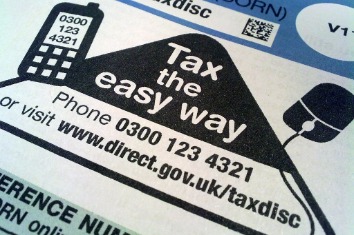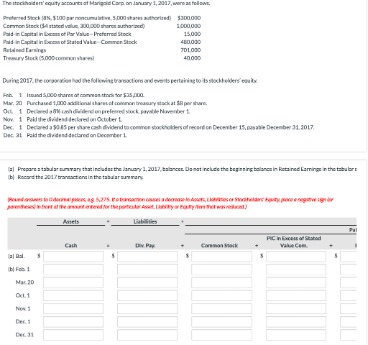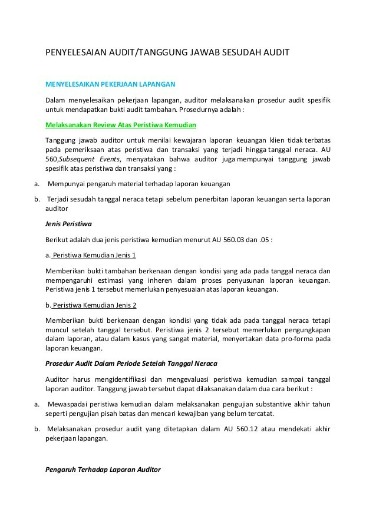
Banks are referred to as debtors and creditors because banks accept and charge interest on different types of deposits from the public, such as savings or term deposits. Ultimately, they need to repay these deposits to the depositors with the amount and interest deposited over time. In addition, debtor and creditor in accounting are always recorded on the balance sheet as significant financial items. Through this balance sheet, one can know and describe the financial standing of the company and the parties concerned.
- Such people and businesses are creditors because they provide you with a loan or, in other cases, even goods and services with no instant payments.
- For example, if a debt is obtained from a financial institution (e.g., bank), the debtor is usually referred to as a borrower.
- As previously outlined, trade receivables will not normally be discounted and will not normally have an effective interest rate.
- Financial reports are published each quarter by businesses to provide stakeholders material information to inform their financial choices.
Conversely, long-term debtors owe amounts that are due longer than one year. The amounts are recorded as long-term receivables under the company’s long-term assets. Simply stated, accounts receivables
are the amounts owed to you and are evidenced on your balance sheet by promissory
notes.
What is a creditor?
A creditor is an entity, company or person that has provided goods, services or a monetary loan to a debtor. It has long been assumed that, when a company is insolvent or approaching insolvency, the directors are under a duty to consider the interests of the company’s creditors, rather than its members. This is sometimes called the “rule in West Mercia”, after a case in which it was first explored. The scope of this duty, including when it arises, has been the subject of debate.
Ratio analysis is the process of analyzing the information in a financial report as it relates to another piece of information in the same report. The majority of the additional employees for small limited companies are for general bookkeeping or administration work. As a general guide, you should ensure you would be happy proving that the remuneration package is at a general market level.
- Your customers may make advance payments
for merchandise or services. - They are also essential to monitoring a company’s performance over time, as well as understanding how a company is progressing toward key strategic initiatives.
- Thus, your trade payables will amount to $500 for the invoice you got.
- If you want to learn how to perform financial statement analysis, either for your own interest or to better perform the duties of your job, a number of options can help you gain the skills you need.
- In accounting, debtors and creditors are the two main parties in any transactions of businesses.
The Act effectively mandates a balance sheet test of solvency when deciding whether a company can pay a dividend. But directors will breach their duty if they cause a company to pay a dividend when it is cash flow insolvent, even if the company satisfies the balance sheet solvency test in the Act. We accept payments via credit card, wire transfer, Western Union, and (when available) bank loan. Some candidates may qualify for scholarships or financial aid, which will be credited against the Program Fee once eligibility is determined.
How can I invest my company’s money?
When you ensure timely payments to your suppliers, it can bode well with other suppliers who might be keeping an eye on creditor days. As a result, you are more likely to get favourable payment terms in the future. Both debtor and creditor roles are important because they determine the position of the parties involved what is absorption costing in the financial transactions of a business. A creditor is a person or an organization that provides money to another party immediately in exchange for receiving money at some point in the future with or without additional interest. In other words, a creditor provides a loan to another person or entity.
Several operating cycles may be completed
in a year, or it may take more than a year to complete one operating cycle. The time required to complete an operating cycle depends upon the nature of
the business. It is conceivable that almost all of the assets that are used
to conduct your business, such as buildings, machinery, and equipment, can be
converted into cash within the time required to complete an operating cycle. However, your current assets are only those that will be converted into cash
within the normal course of your business. The other assets are only held because
they provide useful services and are excluded from the current asset classification.
Spirit Technology Solutions (ASX:ST1) Has Debt But No Earnings; Should You Worry? – Simply Wall St
Spirit Technology Solutions (ASX:ST Has Debt But No Earnings; Should You Worry?.
Posted: Mon, 04 Sep 2023 00:03:08 GMT [source]
Debtors are those individuals or entities who purchase any goods or services on credit and for which they owe money in return. One example of explaining the debtor vs creditor concept is if you have lent your friend ₹30,000, and they have not paid back the money, then they are your debtor, and you are their creditor. Depending on the type of undertaking, debt can be referred to in different terms. For example, if a debt is obtained from a financial institution (e.g., bank), the debtor is usually referred to as a borrower. If the debt is issued in the form of financial securities (e.g., bonds), the debtor is referred to as an issuer.
.css-177mjipposition:absolute;opacity:0;top:calc(-72px – 20px); Different kinds of creditors
An allowance for impairment losses is possible, but it must be determined in a more logical and systematic way than has often been the case in the past. An individual receivable/debtor impairment factor is likely to be specific to that receivable/debtor – pending liquidation of the entity, for example. A collective impairment factor is likely to be as a result of past economic events that affect the receivables in general (eg interest rates).

Current assets include cash and other
assets that in the normal course of events are converted into cash within the
operating cycle. For example, a manufacturing enterprise will use cash to acquire
inventories of materials. These inventories of materials are converted into
finished products and then sold to customers. Instead, the finished products are purchased
and are sold directly to the customers.
What is profit and loss account?
Few of the creditors, for example, could be the supplier of raw materials to a manufacturing company. The supplier, in this case, is the creditor because it supplied the needed materials to a manufacturing company on credit. Thus, the manufacturing company owes money to the supplier, who, in this case, is the creditor. Managing finance involves figuring out which box you will tick in terms of debtor and creditor.

Financial reports publicly traded companies are obligated to release are the income statement, balance sheet, and the statement of cash flows. Moreover, the legal right to sue is the distinguishing characteristic of the debtor vs creditor relationship. If the debtor fails to repay the borrowed money, the creditor has all the legal rights to sue the debtor to recover the debt amount. Likewise, if the company is not in a good financial position, the creditor can demand to pay back the money from the company that owes the debt. Accounts receivables are money owed to the company from its customers. As a result, accounts receivable are assets since eventually, they will be converted to cash when the customer pays the company in exchange for the goods or services provided.
Examples of Creditors
This article covers the general accounting principles and then outlines its applicability to CAT Scheme Papers 1, 3 and 6, and Professional Scheme Paper F3. In all cases, net Program Fees must be paid in full (in US Dollars) to complete registration. No, all of our programs are 100 percent online, and available to participants regardless of their location.
Your customers may make advance payments
for merchandise or services. The obligation to the customer will, as a general
rule, be settled by delivery of the products or services and not by cash payment. Advance collections received from customers are classified as deferred revenues,
pending delivery of the products or services.
Is Adtalem Global Education (NYSE:ATGE) A Risky Investment? – Simply Wall St
Is Adtalem Global Education (NYSE:ATGE) A Risky Investment?.
Posted: Mon, 04 Sep 2023 11:26:15 GMT [source]
The amount you owe under current liabilities often arises as a result
of acquiring current assets such as inventory or services that will be used
in current operations. You show the amounts owed to trade creditors that arise
from the purchase of materials or merchandise as accounts payable. If you are
obligated under promissory notes that support bank loans or other amounts owed,
your liability is shown as notes payable. Other current liabilities may include
the estimated amount payable for income taxes and the various amounts owed for
wages and salaries of employees, utility bills, payroll taxes, local property
taxes and other services. Trade receivables are financial assets falling under ‘loans and receivables’ in IAS 39 and FRS 26.
Thus, if there is deterioration in the credit quality of the financial assets as a result of a past event, then an impairment loss may have occurred. The recognition of future losses based on possible or expected future trends is not in accordance with the IASB Framework and IAS 37/FRS 12, Provisions, Contingent Liabilities and Contingent Assets. General provisions would therefore not be allowed as the historical experience is zero and it is unlikely to produce an acceptable estimate of the cash flows to be received.
